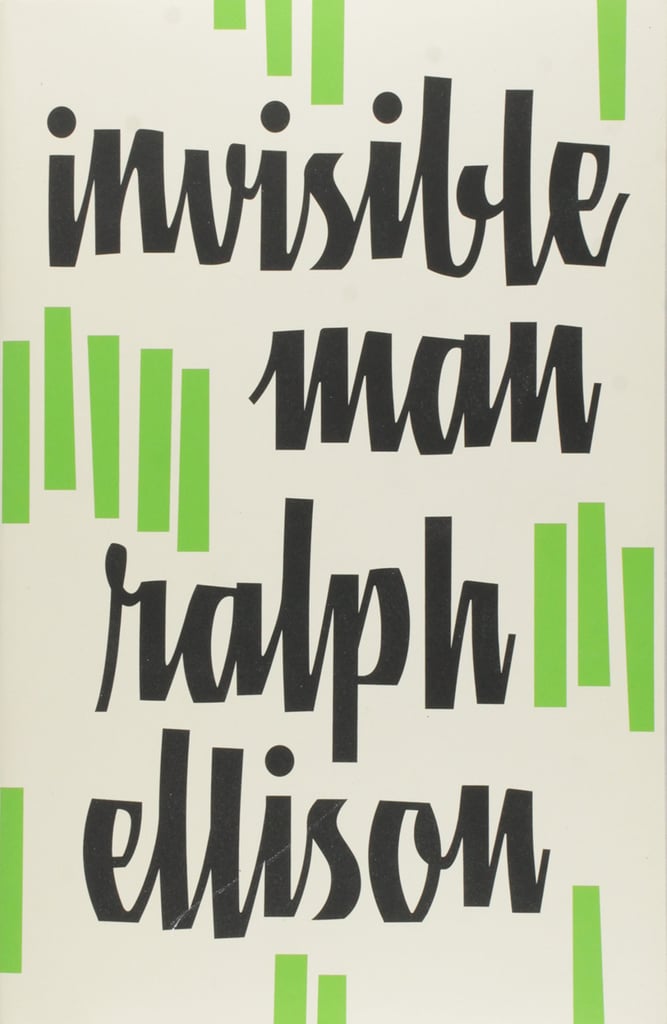

Invisible Man defines race as simply one of many other categories that prevents people from truly interacting. What is the significance of such a comparison? In what ways is it accurate or inaccurate?

What is the Brotherhood's attitude towards race? Why does the narrator at first accept it, then later reject it?.In the novel, what winds up being problematic about this formulation? What actually does end up being the key to black progress? In the beginning of the novel, the narrator writes a speech praising humility as the key to black progress.To what extent is the narrator's sense of self bound to a racial identity?.For a long time, the narrator's identity is defined by his race, leading to his invisibility. GradeSaver, 10 April 2000 Web.While most the narrator's difficulties throughout the novel are associated with his race, Invisible Man is a novel aimed at transcending race and all the other ways humanity has used to categorize people.
#Invisible man ralph ellison wikipedia how to#
Next Section Invisible Man Summary Buy Study Guide How To Cite in MLA Format Peterson, Cameron. Over the years it has been awarded with numerous accolades, such as the Russwurm Award, National Book Award, Rockefeller Foundation Award, and Prix de Rome Fellowships from the American Academy of Arts and Letters. Overall however, the book was greeted positively. The Left also was a harsh critic, finding the novel to be pretentious and otherworldly. Harsh criticism came from a minority of the Afro-American community who claimed that the novel displayed contempt toward blacks. It received favorable reviews by both white and black audiences, although it was also met with some negative reviews. The complete novel was then published in April of 1952. Subsequently, in the early months of 1952, he published the Prologue of the novel in the Partisan Review. In 1948, he published the same section in the American magazine, Magazine of the Year. In October of 1947, Ellison published the battle royal chapter as "Invisible Man" in the British magazine, Horizon. Ellison then spent seven years working on the novel, The Invisible Man. Griffin (The Invisible Man), the title character in Wells novel Invisible Man, a 1952 novel by Ralph Ellison The Invisible Man, a short story by G. He nearly rejected the idea but was intrigued and decided to give it a try. In this vein, he suddenly wrote, "I am an invisible man". One day in 1945, Ellison sat at his typewriter in Vermont, thinking of an ironic joke he had heard from a black face comedian about his family becoming so progressively dark in complexion that the new baby's mother could not even see her. He decided to write a novel about black identity, heroism, and history through the use of the folklore, spirituals, blues, comedians, archetypes, and personal experiences he had gathered over the years. Also influenced by the likes of Sophocles, Homer, Dostoyevsky, Freud, Jung, Wright, and others, he began to think about black leaders and wondered why they ignored their constituents but often bent over backwards for the white man. He spent time reading Lord Raglan's The Hero which discusses African-American mythical and historical figures. He took a sick leave as the War wound down in 1945 and moved with his wife to recuperate in Vermont. He contracted a kidney infection and became depressed. While in the Merchant Marines during World War II, Ellison struggled with writing a prison camp novel. This event provided the background for the climax of the novel, the race riot, which finally succeeds in driving the narrator underground in The Invisible Man. In 1943, he was hired to cover a riot in Harlem. Another experience which was later encapsulated into his novel was his work in freelance writing. This quotation is verbatim out of his FWP encounters. It has the dimensions of 174 by 250. For instance, Mary Rambo's character advises the narrator of the novel to not let New York corrupt him. After 'Invisible Man' by Ralph Ellison, the Prologue is a color photograph by Jeff Wall created in 19992000. Many of the conversations he recorded he then used when he was writing The Invisible Man. Through his work, he came into close contact with a variety of people and thus became better adept at producing realistic characters in his writing. Ellison gained valuable writing experience while working for the Federal Writers' Project between 19.


 0 kommentar(er)
0 kommentar(er)
